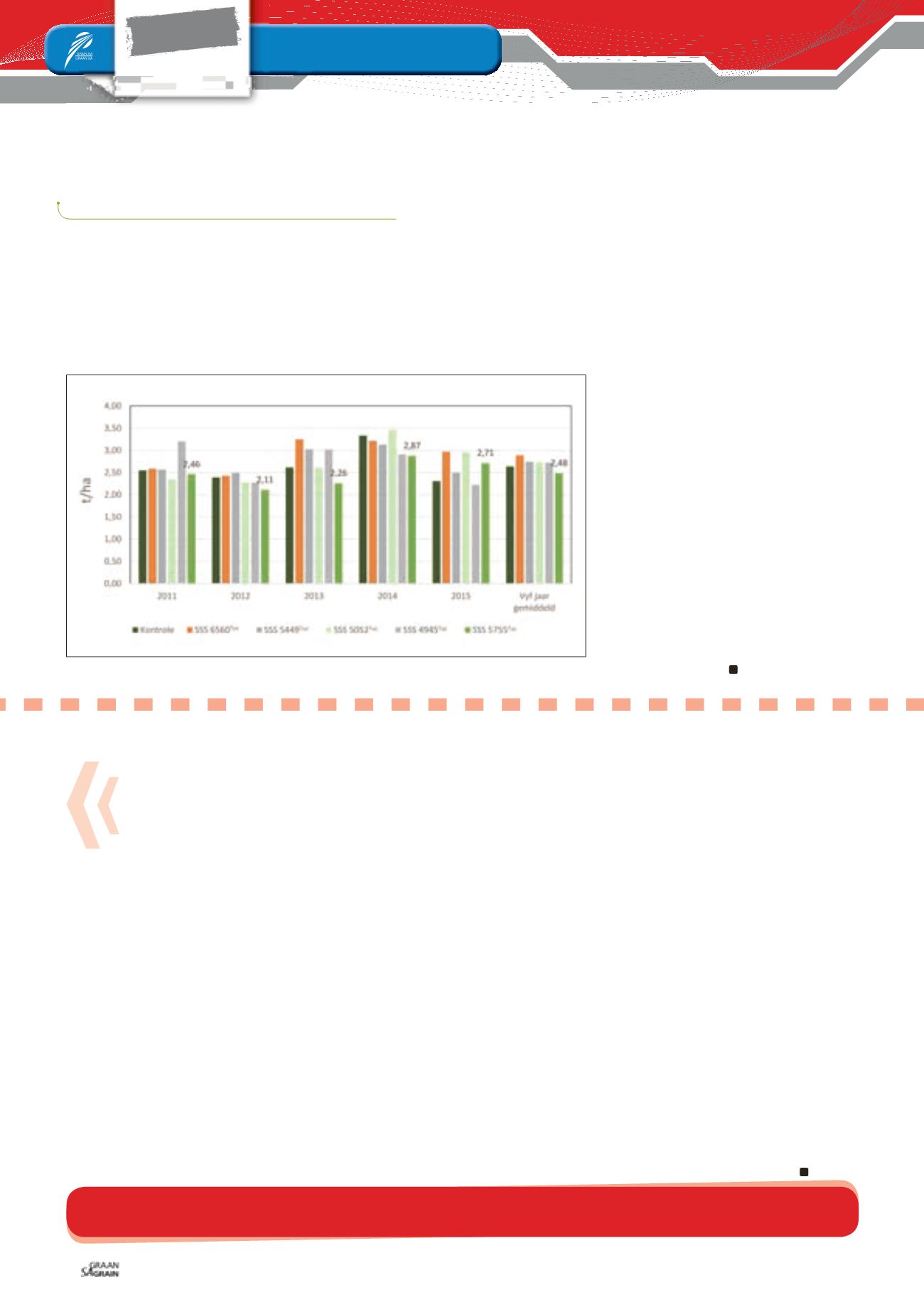

Produk-inligting
FOKUS
Sojabone
Mini
With gratitude to the Oil and Protein Seed Development Trust for financial support of
these annual surveys and to the members of Agbiz Grain for providing the crop samples.
A look at the soybean crop quality
The moisture results used in this calculation was determined by
means of the method prescribed under the ISTA International Rules
for Seed Testing, Section 9, latest edition whereby the moisture con-
tent is determined as a loss in weight of a sample when dried in an
oven at 103°C for 17 hours.
The Dumas combustion analysis technique was used to determine
the crude protein content, according to AACCI method 46-30.01
latest edition. Combustion at high temperature in pure oxygen sets
nitrogen free, which is measured by thermal conductivity detec-
tion. The total nitrogen content of the sample is determined and
converted to equivalent protein by multiplication with a factor of
6,25 to obtain the crude protein content. The weighted average
crude protein content this season was 39,89%, comparing very
well with the 39,84% of the previous season. Mpumalanga showed
the highest weighted average crude protein content of 40,44% and
Limpopo the lowest of 36,16%.
The weighted average crude fat percentage decreased from
19,7% in 2013/2014, to 19,3% this season. The samples from Lim-
popo had the highest weighted average crude fat content of 23,6%.
The lowest average fat contents were observed in Gauteng with
18,9%. The fat is extracted from the sample by petroleum ether with
the aid of the Soxhlet extraction apparatus, followed by the removal
of the solvent by evaporation and weighing the dried residue thus
obtained.
Ash is defined as the quantity of mineral matter which remains as
incombustible residue of the tested substance, after application of
the described working method. SAGL uses an in-house method,
based on the AACCI 08-02.01 Rapid (magnesium acetate) method.
The samples were incinerated at 700 ± 10°C in a muffle furnace for
45 minutes.
The national weighted average ash content did not vary signifi-
cantly over the four seasons that this survey has been conduct-
ed, 4,64% this season compared to the 4,66%, 4,65% and 4,62%
for the previous three seasons. Samples from the Northern Cape
and Limpopo tend to show higher ash contents over seasons.
The weighted average percentage crude fibre varied from 4,9% in
Limpopo to 7,5% in the Northern Cape. The South African weighted
average was slightly higher this season (6,4%), 6,1% the previous
season.
The in-house method used determines crude fibre as the loss
on ignition of the dried residue remaining after digestion of
the sample with 1,25% sulphuric acid (H
2
SO
4
) and 1,25% sodium hy-
droxide (NaOH) solutions under specific conditions.
The results of this survey are available on the SAGL website
(
www.sagl.co.za ). The hard copy reports are distributed to all the
directly affected groups and interested parties. The report is also
available for download in a PDF-format from the website.
Augustus 2016
74
Nuwe sojaboonwenners vir die mark
S
ensako se sojaboonkultivars vir produksie in Suid-Afrika
het hulle oorsprong in die teelprogram van Estación
Experimental Agroindustrial Obispo Colombres (EEAOC)
in Argentinië.
Die oudste openbare landbounavorsinginstansie in Argentinië (1909)
het die afgelope 106 jaar ‘n belangrike rol gespeel in die ontwikkeling
van sojabone. Sensako is bevoorreg om met die EEAOC saam te
werk en toegang te kry tot die beste kiemplasma en kultivars vir die
plaaslike mark.
Die kultivars en gevorderde teellyne deur hulle ontwikkel, is in
statistiese proewe in die plaaslike sojaboonproduksiegebiede ge-
toets en jaarliks deur die EEAOC-navorsingspan geëvalueer. Proef-
resultate toon dat die opbrengspotensiaal, aanpassing, stabiliteit
en stremmingsweerstand van dié kultivars oor produksie-omge-
wings kompeterend was gemeet teen
plaaslike kultivars die afgelope vyf seisoene
(
Grafiek 1
).
Sensako
het
vyf
sojaboonkultivars
– SSS 6560
Tuc
, SSS 5755
Tuc
, SSS 4945
Tuc
,
SSS 5052
Tuc
en SSS 5449
Tuc
, – uit die program
vrygestel wat wissel in agronomiese
eienskappe, volwassenheidsgroepering en
aanpassing by verskillende omgewings.
In kommersiële strookproewe het die
kultivars kompeterende opbrengste ge-
lewer ten spyte van die moeilike produk-
sietoestande. Saad van die kultivars is
kommersieel beskikbaar vir aanplanting in
die komende seisoen.
Ons noem dit die “Sensako effek” – Vorde-
ring deur navorsing.
ROEAN WESSELS
en
FRANCOIS KOEKEMOER,
Sensako
Grafiek 1: Sojaboonkultivars se gemiddelde opbrengsprestasie oor vyf jaar.

















